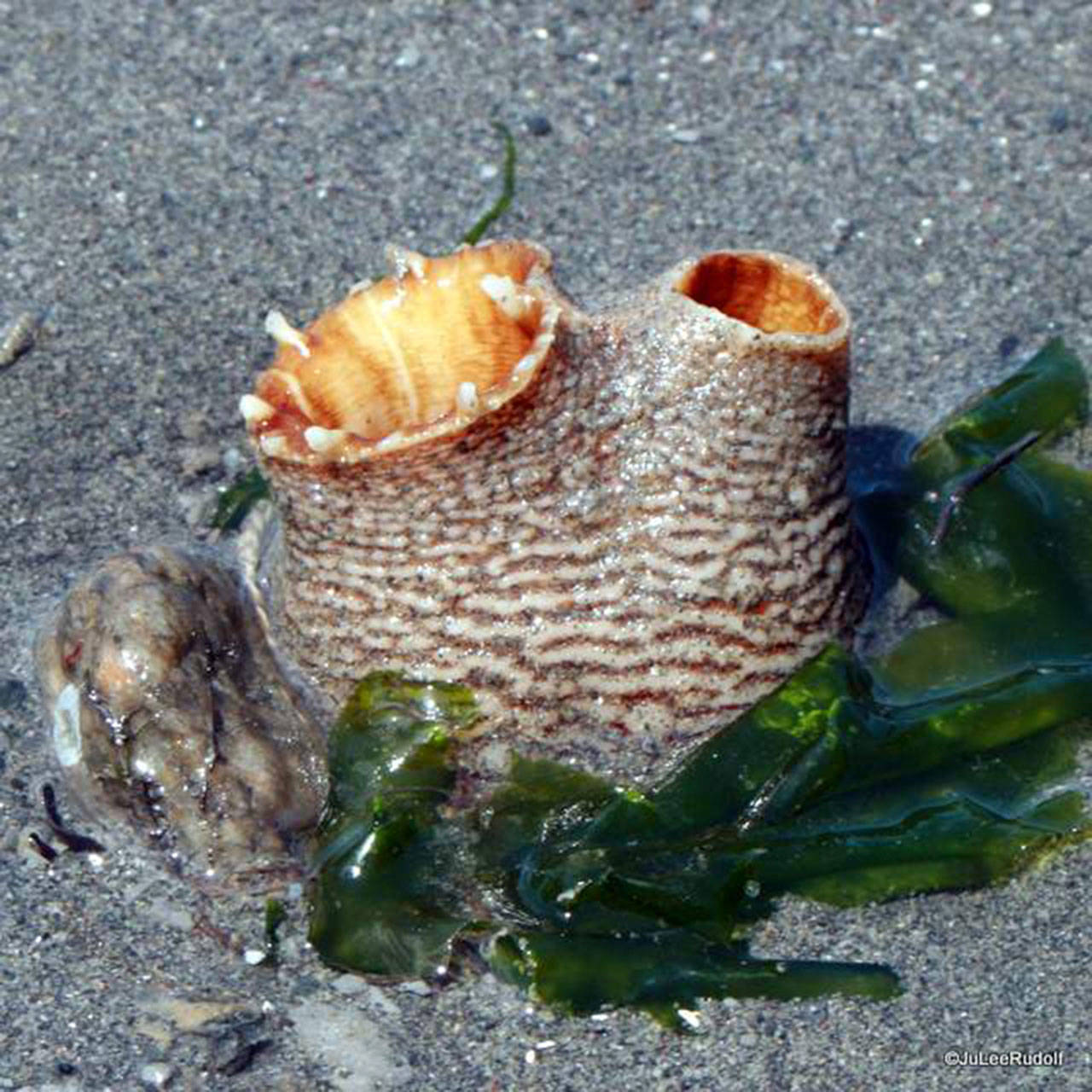The intruder made a beeline for the shore, slowed and placed her hands in the frigid water. I watched, hoping she wouldn’t notice something I coveted and wanted to keep quiet: an unusual sea squirt species. She rinsed her hands, shook them off, turned and walked away. My secret was safe.
Three years ago, in October of 2014, I snapped a photo of a something I’d never before noticed while beach combing at Cornet Bay.
I didn’t think much of it at the time because there were too many creatures new-to-me to become obsessed with just one. At home, I Googled “brown” “squirt” “sea creature.” The search turned up “tunicate.” Kozloff‘s (p 31) description seems to fit what I found, “more or less cylindrical and abruptly cut off,” “rather solid and firm,” “the size and shape of the openings and the siphons subject to muscular control.” During a -2.0 foot tide this spring, I returned to Cornet Bay to track down the tunicates, which was like trying to finding a needle in a haystack. Each set of siphons is small, no more than an inch wide by two inches long, and the beach is 30 feet wide and a mile long. After wandering around for awhile, I eventually found and photographed them.
To read the rest of JuLee Rudolf’s blog, go to https://juleerudolfblog.wordpress.com/2017/07/06/the-science-of-the-clams/


